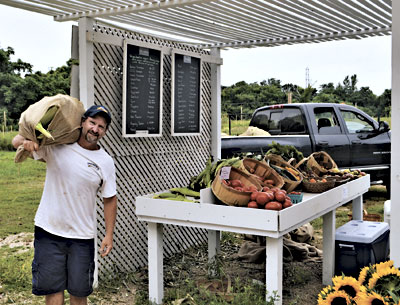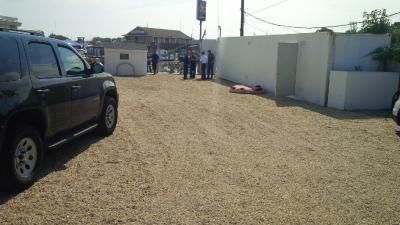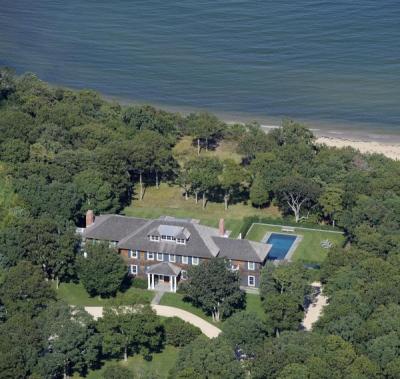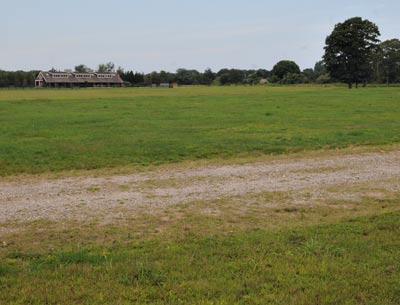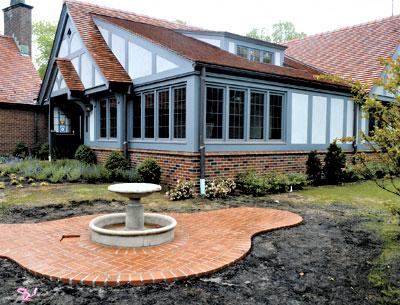Envision New Montauk Dune by Summer
Envision New Montauk Dune by Summer

Construction by the Army Corps of Engineers of a new sand dune to protect property along the downtown Montauk beach against erosion and coastal flooding could get underway at the start of 2015, according to a presentation made at the Montauk Firehouse last Thursday by federal, state, and local officials. Although the clock began ticking this week, with the intention that work should be completed before next summer’s tourist season, a number of questions and concerns were identified at the meeting that might delay the $8.9 million project. The plan calls for creation of a 161/2-foot-high dune along 3,100 feet of shoreline, with a core of 14,000 geotextile bags filled with sand. Because it is considered an emergency measure following extensive beach loss, the work would be paid for with federal money administered by the Army Corps. Speakers at the meeting questioned the project’s design, whether it would introduce a different and undesirable type of sand to the Montauk beach, and even whether a reinforced dune should be built at all, with at least one person suggesting it could do more harm than good. Also questioned was whether the town or Suffolk County would become the project’s local sponsor, the entity designated to bear the annual costs of monitoring the dune and replacing sand lost to erosion or storms. Reconstruction or repairs would be covered by the Army Corps only after severe storms. The county had signed on to sponsor the Army Corps’s decades-old Fire Island to Montauk Point beach restoration project, an initiative that is nearing a start date, but it has not agreed to sponsor the downtown Montauk project, which is considered a short-term, interim measure. Depending on weather conditions, the Army Corps has estimated the cost of annual maintenance at $157,000, but it could fluctuate widely. That estimate was challenged at the meeting by Jeremy Samuelson, the executive director of Concerned Citizens of Montauk, who suggested the cost could be much higher. Because the state Department of Environmental Conservation had set yesterday as the deadline for establishing the local sponsor, East Hampton Town Supervisor Larry Cantwell issued a letter saying the town would be the local sponsor, but that town and county atorneys were still negotiating an agreement by which the county would shoulder half the annual maintenance costs. The agreement is to be presented to the Suffolk Legislature next week. “We haven’t seen the final plans and specs yet,” the supervisor said in an interview Tuesday, commenting that discussions with the Corps are difficult. “There are some serious considerations here for the town, in terms of cost, in terms of liability . . . how well is this designed; what is the likely outcome. . . .” The Fire Island to Montauk project, under which more extensive rebuilding of the Montauk beach is expected, has been authorized by Congress, and funding for it appropriated, Mr. Cantwell said. But preliminary legal and planning steps are likely to delay any work on it until early 2017, according to Frank Verga, the Army Corps project manager. Financial arrangements for the downtown Montauk project, as an interim measure, would expire when the Army Corps completes the more permanent beach restoration. Maintenance costs for that project are to be shared by federal, state, and local municipalities according to an established formula. ‘Our beaches are one of the most important assets we have, and every piece of it, every aesthetic piece of it, is important.’ — Supervisor Larry Cantwell Besides the financial aspect of becoming the interim project’s local sponsor, “I think the town can be assuming some liability here,” Mr. Cantwell said. East Hampton has already been named, along with the county, state, and the Army Corps, in a lawsuit by Montauk property owners over the Corps’ installation of a jetty at the mouth of Montauk Harbor, which, the suit claims, has exacerbated nearby erosion. Another complication is that before work on the downtown beach can begin, the town must obtain easements from oceanfront property owners allowing sand to be placed on slivers of private land to create a gradual slope to the beach. If any property owner balks, Mr. Cantwell said, “this project’s going to be delayed — that’s the bottom line.” It was reported at last week’s meeting that a New Jersey beach reconstruction project had been delayed for years while one municipality attempts to use eminent domain to obtain the land needed. In addition to building the new dune, pedestrian walkways would be placed over it at each of the oceanfront road ends. Vehicle access has been proposed on the dune’s eastern end, at South Edison Street, and the town has asked for a second vehicle access at South Eton Street, the western entrance to the downtown area. Two speakers last week argued against the use of geotextile bags to reinforce the dune. Kevin McAllister, the former Peconic baykeeper who has a background in coastal management, said the bags would have the same effect on the shoreline as hard structures, which accelerate erosion. “Two feet of sand over a hardened structure is nothing more than a veneer,” he said. “When exposed,” the bags will “act every bit as a rock revetment or seawall.” He said the project should be limited to sand. “In the big picture, we have to start retreating from the shore,” Mr. McAllister said. He suggested using the community preservation fund to acquire shoreline properties, a purpose for which the fund has been authorized in recent state legislation. In a letter commissioned by the Surfrider Foundation, Robert S. Young, a geologist and director of the Program for the Study of Developed Shorelines in North Carolina, concurred, calling the project’s design “ill conceived” and a bad precedent that would result in loss of the public beach in order to protect private properties. Mr. Samuelson raised the question of whether the sand trucked in for the dune would be compatible with the natural sand, both visually and ecologically. “There’s beach sand, and there’s quarry sand,” Mr. Samuelson said. Sand excavated from the beach to create a location for the geotextile bags would be used on top of the manmade dune, Lynn Bocamazo of the Army Corps’ New York District engineering division said, although imported sand could be used to fill the bags. Mr. Samuelson was not mollified. “When these bags break, our beach will be covered with upland quarry sand,” he said. Mr. Cantwell agreed this week that which sand was used was important, noting that the issue had been raised with the state and Army Corps. “Our beaches are one of the most important assets we have, and every piece of it, every aesthetic piece of it, is important,” he said. Ms. Bocamazo said which sand was used could be spelled out. Mr. Samuelson also questioned the dimensions and volume of the sand-filled bags as well as their placement. “I have not heard a resounding approval of this design from professionals,” Mr. Samuelson said. In fact, “I have heard the opposite, he said. Ms. Bocamazo’s response was that the design was based on engineering and was “an affordable solution.” “Compatibility of sand, and the size and design” of the geotextile bag component remained “two open questions,” Mr. Cantwell said. He said Kim Shaw, the town’s natural resources director, had consulted with independent coastal geologists and shoreline experts about the Corps’ proposals, that their comments had been forwarded to the agency, but the issue remained “somewhat unresolved.” A man who said he was a beachfront motel owner asked what the area would look like when the project was underway. That information would impact his decision on when to reopen for next season, he said. Ms. Bocamazo said the contractor selected would set a schedule so that property owners would know when work was slated along their stretch of beach. The work would probably start at the eastern edge and move to the west, she said, with several bulldozers or front-end loaders plus other equipment occupying a possibly 100-by-100-foot area on the beach. There also would be several sand stockpiles, and attendant noise. On many Corps projects, work is conducted 24/7, she said, but this project would probably be limited to business hours. Town Budget ?Continued from A1 marked for programs for senior citizens in Montauk and at the East Hampton Senior Center, and to increase the hours of a cook for the nutrition program. A $10,800 allotment would cover a new, part-time youth coordinator in the Human Services Department. Allocations to outside groups would be continued, such as $80,000 to the East Hampton Day Care Learning Center, $35,000 to the Project Most after-school program, and $50,000 to the Family Service League. In addition, a $25,000 grant would be made to the South Fork Behavioral Health Initiative to help cover the costs of providing mental and behavioral health services. The East Hampton Historical Society would receive $20,000 toward repairs to the Second House Museum building in Montauk. The executive assistant to the supervisor, a post held by Alex Walter, would become full time under the tentative budget. A 2-percent salary increase for department heads has been budgeted for, and provisions made for the settlement of a contract under negotiation with the Civil Service Employees Association. Because of a financial deficit accrued under a previous administration, the town had to borrow $21 million in 2010 and 2011, and has been paying that off. The total now owed is $12.9 million. The supervisor has proposed moving $1.7 million of surplus next year to a reserve fund earmarked for debt repayment, which would bring that reserve to $2.9 million — enough to cover approximately 25 percent of the deficit borrowing still due. A $2.5 million principal payment is due next year. The town currently has a fund balance totaling $18 million. The proposed budget would rely on a total of $677,499 in appropriations from fund balances and reserves. This year, $800,000 in set-aside money was used. The budget relies on conservative estimates of income next year from mortgage tax and other revenue sources, such as grants, fees, and fines. While mortgage tax revenue this year is expected to reach almost $4.7 million, the proposed budget estimates $4.1 million coming in next year. “This is a cyclical revenue source subject to change in the real estate market, and it is prudent to be cautious in estimating this revenue,” according to the budget message. Should mortgage taxes result in more income than expected next year, Mr. Cantwell said Tuesday, the overage would help the town improve its financial standing. Closure of the town scavenger waste treatment plant this fall will save the town almost $460,000 next year, compared to this year’s budget. A proposed spending plan for the community preservation fund, which is separate from the town’s operating funds and receives income from a 2-percent real estate transfer tax rather than property taxes, calls for $25 million to be spent next year on land purchases. As of Sept. 20, the preservation fund had a cash balance of just over $52 million, of which $30 million has been earmarked for pending acquisitions. The current part-time position of environmental technician would become a full-time job, with the C.P.F. paying half the cost of the increased salary. Because the staffer would also help to manage properties not acquired with the preservation fund, the remainder of the salary would come from the town’s general fund. C.P.F. revenue this year is expected to total $25.2 million. Next year’s spending plan was crafted with a “conservative projection” of $18.3 million in 2015 income in mind. The town board will review and discuss the proposed budget at its next two work sessions, on Tuesday and Oct. 14, and will schedule a public hearing during November. A final vote on the budget must take place, according to state law, on or before Nov. 20.



